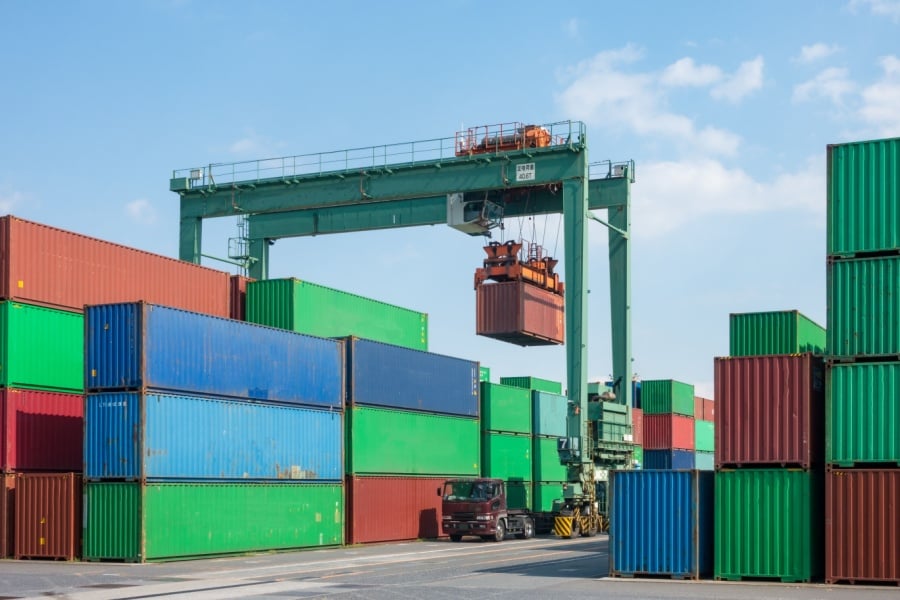Telematics systems enhance safety and efficiency in fleet management by finding and tracking potential issues before they materialize into serious problems.
They also allow for better predictive maintenance, contributing to longer lifespans for fleet vehicles.
Fleet telematics also plays a vital role in creating a culture of safety within fleets, lowering the frequency of accidents, and establishing accountability for drivers, mechanics, and management.
Here, we'll explore these and other benefits of telematics for fleet managers and dive into the exciting advancements currently underway in the field.
Telematics 101
Telematics combines GPS technology and onboard diagnostics (OBD) to track cars, trucks, and other equipment. It then plots the locations and movements of these vehicles on an easily accessible map via computer or mobile device.
Many commercial and public sector fleets use telematics—also known as GPS vehicle tracking or fleet tracking—as an essential management tool.
Vehicle telematics track and provide reporting on various data points, including fuel usage, speed, idling, and tire pressure. They monitor driving habits, boost fuel efficiency, and lower maintenance costs.
Many industries incorporate fleet telematics into their everyday operations, including:
- Courier and delivery
- Home repair
- Towing and trucking
- Food and beverage
- Fuel and utilities
- Waste management
But how exactly does a telematics system work?
How Telematics Works
Every fleet management telematics system contains several essential pieces of hardware:
- GPS receiver;
- Engine interface;
- Input/output interface;
- SIM card
- Buzzer
- Accelerometer
Once installed, a small telematics device—typically called a black box—plugs into an OBD II or CAN-BUS port and records information from the vehicle.
That box then communicates to and stores data on the cloud via an internal SIM card and modem. It collects a large amount of data such as GPS location, speed, distance, G-force, battery life, fuel consumption, engine activity, time spent idling or braking, warning indicators, and even if the driver is wearing a seat belt.
The box then decodes this data and transfers it to fleet management software for reporting and analysis. Users can generate and export reports on everything from fuel consumption trends to vehicle maintenance schedules and lists of drivers with the most speeding incidents.
Machine learning and data analytics allow managers to dig deeper, plotting more efficient delivery routes or comparing their fleet’s safety records with those of other firms.
Through an open-platform system, telematics systems integrate with other technologies for greater efficiency and insight. These include but are not limited to electronic logging (ELDs), dashboard cameras, route optimization, weather tracking, and remote diagnostics.
What's the Difference Between Telematics and GPS?
GPS is a technology that determines a device's precise location. In fleet management, it provides the basic function of tracking vehicle location.
Telematics is a broader term encompassing GPS technology but also includes the collection, processing, and analysis of data from vehicles. It goes beyond location to provide insights into:
- Vehicle performance: Fuel consumption, engine diagnostics, maintenance needs.
- Driver behavior: Speeding, harsh braking, idling time.
- Fleet efficiency: Route optimization, utilization, asset management.
Essentially, GPS is the foundation, while telematics builds upon it to offer a comprehensive view of fleet operations.
How Telematics Benefits Fleet Management
Effective fleet management requires answering a stream of questions: How can we use less fuel? How much time and money do we lose when idling? Should we switch to EVs? How often do our drivers speed? Telematics helps fleet managers find answers to these questions and more.
Telematics isn't exclusively for large fleets. Companies of all shapes and sizes use it, from modest nonprofits and small businesses to sprawling government agencies and large corporations.
The global automotive telematics market, for instance, was valued at $50.4 billion in 2018 and is projected to hit $320 billion by 2026.
Telematics helps fleets in six primary areas:
- Safety. A safer driver experience with in-vehicle coaching, driver behavior reporting, collision notifications, and stolen vehicle location.
- Sustainability. Minimizing environmental impact by managing fuel consumption, reducing idling, and incorporating EVs.
- Productivity. Enhanced customer service with GPS tools to track vehicles, dispatch, and reroute as needed.
- Compliance. Providing transparency on electronic logging of hours, vehicle inspections, and IFTA reporting.
- Integration. Working seamlessly with other software systems, including CRM software or onboard camera technology.
- Optimization. Streamlined maintenance with remote diagnostics, predictive maintenance, and fuel management.
While the benefits of telematics systems for fleet managers are many, how safe and efficient are they?
The Efficiency and Safety of Telematics Systems
Telematics provides significant safety benefits for fleets, including identifying and preventing harsh braking, speeding, aggressive driving, and collisions.
Telematics helps to make our roads safer with:
- In-reverse activity collisions. Telematics can tell a driver when a nearby vehicle is reversing and alert them to be cautious.
- Driver coaching. Spoken words, identifications, or alert sounds can heighten driver awareness at the wheel. Telematics can alert drivers if they're going too fast or forget to fasten a seatbelt.
- Scorecarding. Telematics helps drivers track personal risk by keeping score of factors such as acceleration, speeding, excessive braking, and seatbelt use.
Collision data can also be used on a larger scale to flag and rank the cities with the most dangerous intersections, data that mayors and other government officials might find helpful in urban planning.
How Telematics Extends Vehicle Lifespan
It goes without saying that regular vehicle maintenance is necessary for a safe and efficient fleet.
Telematics can address several preventative maintenance issues and improve fuel efficiency by identifying:
- Low engine oil levels;
- Clogged intake and exhaust systems and air filters;
- Malfunctioning engine cooling fans;
- Air compressors that run excessively due to faulty equipment;
- Misaligned wheels;
- Underinflated tires;
- Drag from highway air resistance; and
- Malfunctioning air conditioners.
Predictive fleet maintenance analyzes hundreds of thousands of data points and identifies patterns that can help solve past issues before they arise.
This allows fleet managers to proactively schedule maintenance and prevent problems before they happen, lowering fuel consumption and increasing vehicle uptime.
A Safety-Conscious Culture With Telematics
Vehicle telematics helps drivers perform their jobs safely by making them more aware of their behavior behind the wheel. It can also provide insight into how their fellow drivers perform and encourage open dialogue about safe driving.
Fleet managers can implement programs that provide financial incentives to operators for safe driving, using telematics to measure key performance indicators such as routes, vehicle speed, and service hours.
Telematics Reduces the Risk of Accidents
With telematics, fleet managers can analyze their drivers' real-time actions and use those insights to lower their risk of accidents. How aggressive are their drivers? Are there unauthorized people riding with the driver? Does the driver appear to be intoxicated? Has the driver ever fallen asleep at the wheel?
Answering these and other questions helps managers get in front of risky behavior before it manifests into serious problems.
Risk management facilitated by telematics helps to lower insurance premiums by improving rerouting and efficiency, verifying the cause of accidents through video monitoring, maintaining driver privacy by turning off facial recognition features, and requiring driver consent to be recorded.
The Exciting Future of Telematics
Like other logistics technologies, telematics is undergoing an exciting period of transformation.
Several technological innovations are already improving telematics systems, including but not limited to:
- Internet of Things (IoT). Managers can fluidly communicate between vehicles that are connected to the internet. This allows them to track vehicles in real-time and provide automated system updates. As a result, vehicles spend less time in traffic and reduce operational costs.
- Artificial intelligence (AI) and machine learning (ML). These tools provide advanced data processing capabilities, allowing telematics to more accurately predict outcomes and use data to make better decisions. This makes it easier for managers to use predictive analytics for vehicle maintenance and provide personalized user experiences to their drivers.
- Cloud computing and big data. These two innovations allow for comprehensive data storage and high-end data processing. They're particularly useful in environmental monitoring and tracking vehicle emissions to ensure compliance with government regulations.
- Video telematics. When HD video footage meets telematics, risk managers can observe driver behavior and provide personalized coaching that results in safer routes.
These represent only a handful of the exciting advancements currently underway in the telematics industry.
Track the Future of Trucking With Ryder
With RyderTelematics, your fleet will enjoy the latest technology systems and integrations that help your business increase safety, maximize efficiency, and stay compliant with regulations.
Add to that our partnership with Geotab, and you have a solution that streamlines fleet visibility and management for IFTA records, eDVIR, reporting, and location visibility.
Other features of RyderTelematics include partnerships with leading ELD technology companies, access to in-cab cameras and trackers to provide safety and compliance, and improved vehicle efficiency insights into driving habits.




